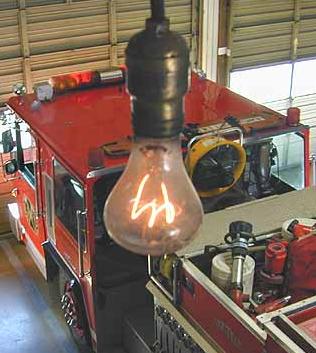Not a Bright Idea

That would have to wait until December 23, 1924.
On that date, a group of light bulb and lamp manufacturers, including General Electric, Phillips, Osram, and most of the other major lighting companies of the time got together with a plan — not to block out the sun, but certainly to reduce the amount of light available. The group formed a Swiss corporation called Phoebus — “Phoebus S.A. Compagnie Industrielle pour le Développement de l’Éclairage” — or, colloquially, the Phoebus Cartel.
The group entered into to a number of agreements aimed at increasing their profits at the expense of consumers. In order to limit price competition, the cartel divided the market into home territories, with each manufacturer receiving exclusive domain over its home country, absent from competition. Some other areas were allotted out to some of the companies, again absent from competition. Together, these ensured lower costs for the lighting manufacturers — less money in marketing, etc. — and of course, higher revenues, given the de facto monopolies created by the cartel in those areas.
But the Phoebus Cartel did not stop there. Light bulbs straddle the line between being durable goods (intended for re-use) and disposable ones (which are replaced often). A typical incandescent light bulb has a lifespan of about 1,000 hours of use — a lifespan the cartel wanted to keep in place. To do so, the cartel standardized light bulbs, making the incandescent bulb (such as the one pictured above) common and expected. Further, the cartel members allegedly agreed to limit the amount of money invested in research and development, in order to make sure that better, more efficient lighting did not kill off their golden product.
The Phoebus Cartel was successful with limited interference for roughly 15 years, with the biggest challenge to it coming from a small group (another cartel, perhaps) of Northern European light bulb manufacturers which refused to participate. In 1939, when World War II broke out, the cartel collapsed as the war prevented the continuance of these types of cross-border agreements.
Bonus fact: As it turns out, 1,000 hours is probably close to the best lifetime one would expect from a bulb, if used efficiently. But you can, in fact, extend the life of a lightbulb to much, much longer — if you are willing to forgo a lot of light by expelling the energy as heat instead. The light bulb pictured above is a unique example — it is a carbon-filament bulb called the Centennial Light. It is from a firehouse in Livermore, California, and has been turned off only a few times in its history — a history which goes back to when it was first installed in 1901. As of 2009, the bulb has not been shut off at all in over three decades.
From the Archives: Let There Be Light: How a small town in Italy which gets no direct sunlight during part of the year fixed their illumination problem.
Related: A 1,000 watt lightbulb used for growing produce in the darkness and cold of winter — $300 and change.

Leave a comment